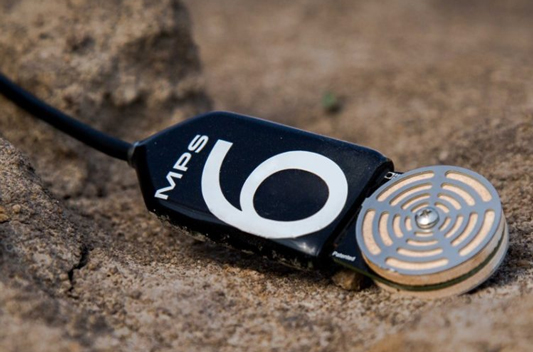An endangered frog and soil water potential

Soil water potential, an endangered frog and climate change are three topics rarely discussed together. Yet, recent research from the University of Western Australia found that the successful breeding of an endangered frog is intricately linked with soil water potential which, in turn, may be altered by climate change dynamics. Understanding the interplay of these processes, and integrating knowledge from three disparate scientific disciplines, is critically important for the conservation of a unique frog.
Water potential describes the physical movement of water from one location to another. Water moves along a water potential gradient from wet to dry regions. Additionally, soil water potential is a measure of the wetness, or hydration level, of soils.
Frogs are highly dependent on moist environments. Wetter sites are critical for maintaining hydration, potential food sources and breeding success. That is, a moist site provides favourable conditions for frogs to mate as well as to lay eggs. Moreover, terrestrial frogs are dependent on soil water levels. Therefore, it was hypothesised by researchers at the University of Western Australia that soil water potential will be an important environmental variable in the successful breeding of a terrestrial frog.
The white-bellied frog (Geocrinia alba) is only 20 mm in length and is a terrestrial breeding frog. The species is endemic to a small region of south-west Western Australia and, within this region, is restricted to specific drainage systems. Consequently, this unique species is listed as critically endangered and understanding its mating behaviour in relation to soil water potential is critical for its long-term survival.
Figure 1. The white-bellied frog (Geocrinia alba). Image source: Western Australian Museum.
During the 2019 breeding season, the scientists installed a series of TEROS 21 (MPS-6) soil water potential sensors, alongside soil temperature and acoustic monitoring devices, across known white-bellied frog breeding sites. Mating behaviour was quantified by counting the calls of the frog with more calls representing increased mating behaviour. Statistical models were used to determine the relative importance on each environmental variable on frog call count.
Figure 2. The TEROS 21 soil water potential sensor (formally called the MPS-6 sensor) was used in the study by researchers from the University of Western Australia.
At the beginning of the breeding season, temperature and soil water potential were significant explainers of white-bellied frog call count. But, by the end of the breeding season soil water potential was the most significant environment variable. That is, as soils dried there was less frog calling and a decrease in frog mating behaviour. The researchers found that the optimal environmental conditions for calling was 10.0 to 18.7°C temperature range and -8 to -11 kPa soil water potential range. When soils were drier than ~-11 kPa, there was no frog calling.
For context, a soil water potential value of -11 kPa is considered very wet soil. Farmers and agriculturalists generally maintain soil wetter than -30 kPa (although others continuously maintain soil as wet as -11 kPa). Therefore, soil only needs to dry marginally to have a very significant impact on the breeding behaviour of the endangered, white-bellied frog.
And this is where climate change joins the story! Climatologists have predicted that the south-west region of Western Australia is likely to experience hotter and drier conditions under current climate change trajectories. Therefore, the forecasted changes will impact the hydrology across the landscape with a decrease in water availability. Where favourable hydrological conditions persist, the breeding season may nevertheless be shorter because of hotter temperatures leading to less chances for successful reproduction. Consequently, the white-bellied frog is highly vulnerable to expected changes in the environment.
The research by the scientists at the University of Western Australia highlights the importance of integrating different scientific disciplines to understand the big picture. In this study, soil science and environmental biophysics were integrated with zoology and ecology in a broader context of landscape hydrology and climatology. Hopefully, with a better understanding of the relationship between soil water potential and breeding success, there is a chance for the endangered, white-bellied frog.
reference
Hoffmann and Mitchell, 2022. Breeding phenology of a terrestrial-breeding frog is associated with soil water potential: Implications for conservation in a changing climate. Austral Ecology, 47: 353-364.
further reading
- Weather stations and endangered bird species
- Biosphere 2: how do tropical trees behave under drought?
- Why this sensor has made the tensiometer and gypsum block obsolete

